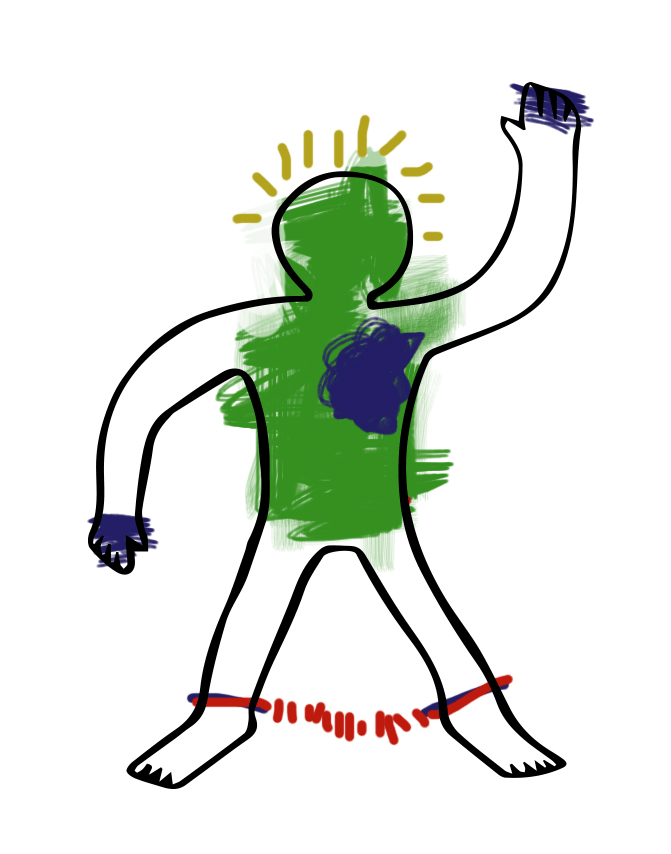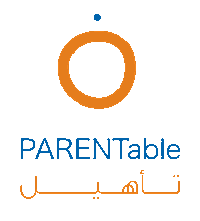
التعددية اللغوية والمدارس
بواسطة البروفيسور دانيال ريلستاب
تساعدك هذه الوحدة على فهم فوائد التعددية اللغوية وتحدياتها بشكل أفضل ، ولماذا من الضروري تعزيز لغة الأسرة وكيف يمكن للعائلات الوافدة حديثًا دعم تطوير لغة أطفالها ، وكيف يمكن للعائلات التغلب على التحديات اللغوية مع المدارس.

لنبدأ بتطبيق:
ارسم لغاتك
اجلس مع عائلتك وأصدقائك. احرص على ان يحصل كل شخص على ورقة والكثير من الأقلام الملونة.
الخطوة 1

يرسم الجميع شكل الإنسان تمامًا مثل الشكل الذي تراه أعلاه. هذا سيمثل جسمك.
يمكنك أيضًا نسخه من شاشتك هنا.
الخطوة 2

على الجميع التفكير في كل اللغات واللهجات التي تلعب دورًا في حياتهم.
الخطوه 3

كن مبدعًا: خذ لونًا واحدًا لكل لغة أو لهجة ، واملأ الجزء من جسدك حيث تعتقد أن هذه اللغة أو اللهجة مناسبة. يمكنك استخدام العديد من الألوان المختلفة كما تريد ، يمكنك تلوين جسمك بالطريقة التي تريدها. لا يوجد حل صحيح أو خاطئ. إنه جسمك!
الخطوة 4

قارن الرسومات وناقش النتائج!

QUIZ
This is a trick question!!
From a linguistic point of view, the mind is not a vessel! Therefore the question makes no sense.
In multilingual societies, e.g. in West Africa, children grow up as multilingual persons.
hover for the answer
HOW MANY LANGUAGES FIT INTO ONE MIND ?

ما هو تعدد اللغات؟
وجهات نظر من عالم الأكاديميا

اللغات في التربية
المراجع
Antonini, Rachele. 2016. “Caught in the Middle: Child Language Brokering as a Form of Unrecognised Language Service.” Journal of Multilingual and Multicultural Development 37 (7): 710–25. https://doi.org/10.1080/01434632.2015.1127931.
Bloomfield, Leonard. 1933. Language. New York: Holt.
Bouvy, Christine. 2000. “Towards the Construction of a Theory of Cross-Linguistic Transfer.” In English in Europe: The Acquisition of a Third Language, edited by Jasone Cenoz and Ulrike Jessner, 143–56. Clevedon: Multilingual Matters.
Busch, Brigitta. 2017. Mehrsprachigkeit. Wien: Facultas.
Cenoz, Jasone. 2013. “Defining Multilingualism.” Annual Review of Applied Linguistics 33: 3–18. https://doi.org/DOI: 10.1017/S026719051300007X
Cummins, Jim. 2000. Language, Power and Pedagogy. Bilingual Children in the Crossfire. Clevedon etc.: Multilingual Matters.
Cummins, Jim, Shirley Hu, Paula Markus, and M. Kristiina Montero. 2015. “Identity Texts and Academic Achievement: Connecting the Dots in Multilingual School Contexts.” TESOL Quarterly 49 (3): 555–81.
Grosjean, François. 2011. “The Bilingual as a Competent but Specific Speaker-Hearer.” In Multilingual Norms, edited by Madalena Cruz-ferreira, 19–31. Frankfrt/M.: Peter Lang.
Herdina, Philip, and Ulrike Jessner. 2000. “The Dynamics of Third Language Acquisition.” In English in Europe. The Acquisition of a Third Language, edited by Jasone Cenoz and Ulrike Jessner, 84–98. Clevedon: Multilingual Matters.
Haugen, Einar. 1953. The Norwegian Language in America, a Study in Bilingual Behavior. Philadelphia: University of Pennsylvania Press.
Wei, Li. 2008. “Research Perspectives on Bilingualism and Multilingualism.” The Blackwell Guide to Research Methods in Bilingualism and Multilingualism. Wiley Online Books. https://doi.org/https://doi.org/10.1002/9781444301120.ch1
اكتشف المزيد من دورات التعلم الإلكتروني.


